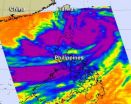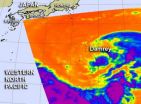(Press-News.org) DURHAM, N.C. -- Water pollution from surface coal mining has degraded more than 22 percent of streams and rivers in southern West Virginia to the point they may now qualify as impaired under state criteria, according to a new study by scientists at Duke and Baylor.
The study, published this week in the peer-reviewed journal Environmental Science & Technology, documents substantial losses in aquatic insect biodiversity and increases in salinity linked to sulfates and other pollutants in runoff from mines often located miles upstream.
"Our findings offer concrete evidence of the cumulative impacts surface mining is having on a regional scale," said Emily S. Bernhardt, associate professor of biogeochemistry at Duke's Nicholas School of the Environment. "The relationship is clear and direct. The more mining you have upstream, the higher the biological loss and salinity levels will be downstream, and the farther they will extend."
Numerous recent studies have demonstrated the water-quality problems caused at or near the site of individual surface coal mines, Bernhardt noted. She and her team "set out to understand how the large and growing number of surface mines is affecting water quality throughout Appalachia."
They used NASA satellite images and computer data to map the extent of surface mining taking place across a 12,000-square-mile area of the southern West Virginia coalfields between 1976 and 2005.
They found that companies had converted more than five percent of the land into mine sites and buried 480 miles of streams beneath adjacent valley fills during this period.
Chemical and biological data from 223 streams sampled by the West Virginia Department of Environmental Protection between 1997 and 2007 were combined with mapping to help the researchers determine that pollution runoff from the mines could substantially degrade more than 1,400 miles of streams in the region. That's four times the length of streams buried by the valley fills.
"It's important to recognize that surface coal mining pollution doesn't stop at mine-permit boundaries," said Brian D. Lutz, a postdoctoral associate in Bernhardt's lab.
"Our analysis suggests that mining only five percent of the land surface is degrading between 22 percent and 32 percent of the region's rivers," he said.
Substantial declines in insect diversity began to occur when companies had mined as little as one percent of upstream land, the analysis showed. In areas where companies had converted about five percent of the land into mines, sensitive species such as mayflies and stoneflies had vanished or declined to an extent that the streams would qualify as biologically impaired under criteria set by the state of West Virginia.
The designation means the streams could be placed on a list of waterways that the state must take steps to rehabilitate.
"What is so compelling is that we found many different types of organisms are lost downstream of surface coal mines, and most of them begin to disappear at similar levels of mining," said Ryan S. King, associate professor of biology at Baylor. "Our analysis shows that coal mining is leading to widespread declines in aquatic biodiversity in Appalachian streams."
INFORMATION:
Lutz and King co-authored the paper with Bernhardt. Other coauthors were John P. Fay, instructor of geospatial analysis at the Nicholas School; Catherine E. Carter, a 2010 master's graduate of the Nicholas School, now at TetraTech; Ashley M. Helton, postdoctoral associate in Duke's Department of Biology; John Amos of SkyTruth; and David Campagna, of Campagna & Associates.
The study was supported by unrestricted gifts in support of research from The Foundation for the Carolinas and the Sierra Club, and through a contract to Amos and Campagna from Appalachian Voices.
DURHAM, N.C. -- Large numbers of humpback whales are remaining in bays along the Western Antarctic Peninsula to feast on krill late into the austral autumn, long after scientists thought their annual migrations to distant breeding grounds would begin, according to a new Duke University study.
The study, published July 30 in the journal Endangered Species Research, provides the first density estimates for these whales in both open and enclosed habitats along the peninsula in late autumn.
It suggests that the little-studied bays are late-season feeding grounds for humpback ...
If doctors want to develop a strong rapport with parents of overweight children, it would be best if physicians used terms like "large" or "gaining too much weight" as opposed to the term "obese." These were findings recently published by medical researchers at the University of Alberta.
Geoff Ball, a researcher in the Faculty of Medicine & Dentistry with the Department of Pediatrics, worked with department colleagues Amanda Newton and Carla Farnesi to review articles about the important relationship between families and health professionals when it comes to addressing ...
One person dies every hour from melanoma skin cancer in the United States, according to the American Cancer Society. A technique, known as photoacoustics, can find some forms of melanoma even if only a few cancerous cells exist, but a recent study by MU researchers found that the technique was limited in its ability to identify other types of cancer. Attaching markers, called enhancers, to cancer cells could improve the ability of photoacoustics to find other types of cancer and could save lives thanks to faster diagnosis, but the technique is in its early stages.
"Eventually, ...
ANN ARBOR, Mich.—In the first human study of its kind, researchers found that using stem cells to re-grow craniofacial tissues—mainly bone—proved quicker, more effective and less invasive than traditional bone regeneration treatments.
Researchers from the University of Michigan School of Dentistry and the Michigan Center for Oral Health Research partnered with Ann Arbor-based Aastrom Biosciences Inc. in the clinical trial, which involved 24 patients who required jawbone reconstruction after tooth removal.
Patients either received experimental tissue repair cells ...
Parents concerned about their children's slothful ways can do something about it, according to research at National Jewish Health. They can increase their own activity. In the July 2012 issue of the Journal of Physical Activity and Health, Kristen Holm, PhD, Assistant Professor of Medicine at National Jewish Health, and her colleagues report that, when parents increase their daily activity, as measured by a pedometer, their children increase theirs as well.
"It has long been known that parent and child activity levels are correlated," said Dr. Holm. "This is the first ...
Irvine, Calif., July 30, 2012 – UC Irvine scientists have discovered intriguing differences in the brains and mental processes of an extraordinary group of people who can effortlessly recall every moment of their lives since about age 10.
The phenomenon of highly superior autobiographical memory – first documented in 2006 by UCI neurobiologist James McGaugh and colleagues in a woman identified as "AJ" – has been profiled on CBS's "60 Minutes" and in hundreds of other media outlets. But a new paper in the peer-reviewed journal Neurobiology of Learning & Memory's July issue ...
Typhoon Saola looks like a monster tropical cyclone in infrared imagery from NASA's Aqua satellite today, July 30. Although Saola's center is over 300 nautical miles (368 miles/592 km) south-southeast of Taiwan, it stretches over the north and central Philippines and has triggered a number of warnings throughout the country.
The Moderate Resolution Imaging Spectroradiometer (MODIS) instrument on NASA's Terra satellite captured an image of Typhoon Saola approaching Taiwan on July 30 at 0215 UTC (July 29 at 10:15 p.m. EDT). The image showed a ragged eye in the storm's center ...
Tropical Storm Damrey appears to be a compact tropical storm on NASA satellite imagery as it heads west. It is expected to pass north of Iwo To, Japan and later south of Kyushu, one of Japan's large islands.
NASA's Aqua satellite passed over Tropical Storm Damrey on July 30 at 03:21 UTC (July 29 at 11:21 p.m. EDT) and the Atmospheric Infrared Sounder (AIRS) instrument captured an infrared image of the storm. It showed that strong, high, cold cloud tops of thunderstorms were in a tight circle around the center of circulation. There were bands of thunderstorms mostly north ...
Vanderbilt-Ingram Cancer Center researchers have identified how one of the genes most commonly mutated in lung cancer may promote such tumors.
The investigators found that the protein encoded by this gene, called EPHA3, normally inhibits tumor formation, and that loss or mutation of the gene – as often happens in lung cancer – diminishes this tumor-suppressive effect, potentially sparking the formation of lung cancer. The findings, published July 24 in the Journal of the National Cancer Institute, could offer direction for personalizing cancer treatments and development ...
ALBUQUERQUE, N.M. — Sandia National Laboratories' wind energy researchers are re-evaluating vertical axis wind turbines (VAWTs) to help solve some of the problems of generating energy from offshore breezes.
Though VAWTs have been around since the earliest days of wind energy research at Sandia and elsewhere, VAWT architecture could transform offshore wind technology.
The economics of offshore windpower are different from land-based turbines, due to installation and operational challenges. VAWTs offer three big advantages that could reduce the cost of wind energy: a ...



